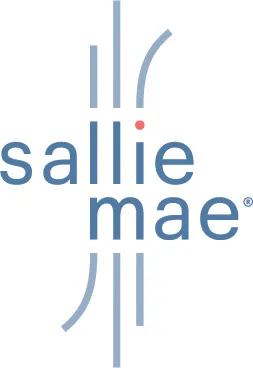
Sallie Mae Reinforces Financial Stability and Shareholder Commitment with Q2 2025 Dividend Declarations
In a continued demonstration of financial resilience and long-term shareholder value creation, SLM Corporation—commonly known as Sallie Mae (Nasdaq: SLM)—has announced its dividend declarations for the second quarter of 2025. The company’s Board of Directors has approved a cash dividend of $1.5815446 per share on its Preferred Stock Series B, alongside a $0.13 per share dividend on its common stock. These dividends are scheduled to be paid on June 16, 2025, to shareholders of record as of June 5, 2025.

The dual declaration of dividends reflects Sallie Mae’s strong financial position and commitment to returning value to both preferred and common shareholders. It also affirms the organization’s strategic focus on capital stewardship amid an evolving education finance landscape. While many companies continue to navigate economic uncertainty and shifting interest rate environments, Sallie Mae’s consistent dividend payouts highlight its stable earnings performance and sound risk management strategies.
A Legacy of Supporting Education
Founded with a singular purpose—to increase access to higher education—Sallie Mae has long been recognized as a leader in the private student lending industry. Originally a government-sponsored enterprise established in 1972, the company underwent a significant transformation over the past two decades, culminating in its complete privatization and rebranding as SLM Corporation. Today, Sallie Mae operates as a publicly traded corporation, independent of any U.S. government affiliation, yet still deeply entrenched in its educational mission.
The company has evolved to offer a broader suite of financial products aimed at empowering students and their families to pursue postsecondary education. With a customer-centric model and a comprehensive understanding of the education financing journey, Sallie Mae continues to shape the student loan market through innovation, transparency, and responsible lending practices.
Dividend Declarations Signal Confidence
The dividend on Preferred Stock Series B represents a fixed income payout that reflects a contractual obligation to preferred shareholders. This class of equity enjoys a priority position over common shareholders when it comes to dividend distribution and capital allocation, especially in financially turbulent times. At $1.5815446 per share, the declared dividend aligns with the expected yield for Series B preferred holders, many of whom are institutional investors seeking steady returns in a diversified portfolio.
Meanwhile, the common stock dividend of $0.13 per share—while modest compared to blue-chip benchmarks—signals steady operational performance. It also reinforces Sallie Mae’s intention to maintain investor confidence by preserving predictable cash returns even as it reinvests in strategic growth areas, such as fintech capabilities, student support services, and new product development.
This consistent quarterly payout supports the broader narrative that Sallie Mae is focused not only on helping students fund their futures but also on delivering ongoing value to its shareholders.
Financial Strength Backed by Strategic Positioning
The latest dividend declarations come at a time when Sallie Mae is leveraging its dominant position in the private student loan sector to build a comprehensive suite of financial tools for students and graduates. In 2024 alone, the company originated billions of dollars in private education loans, serving students at over 2,000 colleges and universities nationwide. It remains one of the few firms with the underwriting expertise and servicing infrastructure to scale private student lending sustainably.
In recent years, Sallie Mae has also launched several complementary offerings designed to ease the transition from college to career. These include financial literacy tools, scholarship search engines, graduate school loan products, and student loan refinancing options—all of which align with its broader mission to help individuals realize the value of education at every stage of life.
The company’s robust balance sheet and prudent credit risk practices have helped mitigate defaults, enabling it to maintain sufficient liquidity for dividend distributions and share repurchase programs. Furthermore, a disciplined capital strategy—combined with conservative reserve management—positions Sallie Mae to navigate macroeconomic challenges while continuing to invest in long-term innovation.
Supporting a Broader Social Mission
More than just a financial institution, Sallie Mae plays a pivotal role in facilitating educational access for American students. The company has consistently advocated for responsible borrowing practices, encouraging students and their families to maximize scholarships, grants, and federal aid before considering private loans. It also partners with high schools, colleges, and nonprofit organizations to deliver financial education workshops and digital content, helping students make informed decisions about borrowing and repayment.
To further its commitment to social responsibility, the Sallie Mae Fund—its charitable foundation—provides scholarships and financial support to underserved communities. These philanthropic efforts reflect the company’s belief that higher education should be accessible to all, regardless of socioeconomic background.
Market Impact and Investor Sentiment
For market participants, dividend declarations offer a valuable signal about a company’s outlook and priorities. Regular payouts like those from Sallie Mae provide a level of certainty that can be particularly appealing to income-focused investors and retirees. Furthermore, in an era of economic volatility, consistent dividend policy serves as a benchmark of financial health.
With more than $20 billion in total assets and a long-standing presence on the Nasdaq exchange, Sallie Mae continues to be a bellwether in the education finance space. Its ability to deliver shareholder returns while investing in technology, customer service, and community initiatives sets it apart from newer entrants in the student lending ecosystem.
Analysts tracking the company often cite its strong underwriting discipline, diversified product suite, and continued efforts to expand financial literacy as key drivers of its long-term value proposition. As Gen Z and future student cohorts increasingly seek digital-first financial services, Sallie Mae’s early investments in mobile banking, AI-powered customer support, and personalized loan management will likely yield competitive advantages.
Looking Ahead
As Sallie Mae enters the second half of 2025, its leadership remains focused on driving sustainable growth, enhancing customer experiences, and preserving financial resilience. The continued declaration of dividends—even amid external uncertainties—speaks to a company that is not only fiscally sound but strategically prepared to meet the challenges and opportunities of the future.
For investors, students, and partners alike, Sallie Mae’s recent announcement offers reassurance that the company remains anchored by purpose, guided by sound governance, and motivated by a commitment to creating brighter futures—both in the classroom and beyond.




